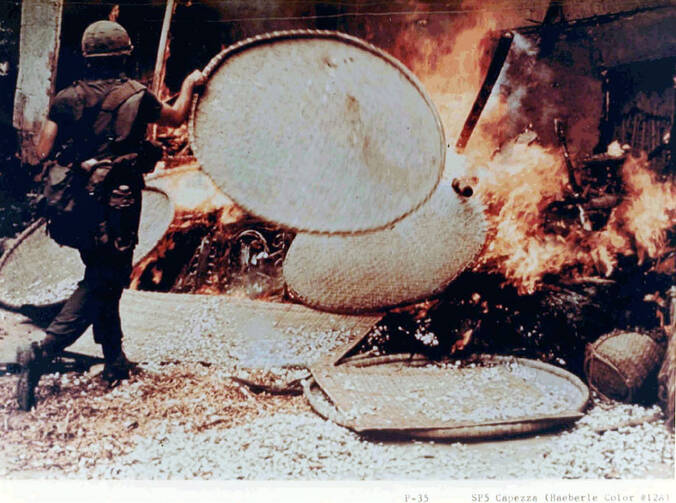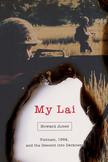Has the United States learned its lesson after the My Lai Massacre?
On the morning of March 16, 1968, some 100 U.S. soldiers from three platoons of Charlie Company (1st Battalion, 20th Infantry Regiment, 11th Brigade, 23rd Infantry Division) dropped by helicopter into three hamlets in central Vietnam just south of the demilitarized zone. Many of the men were still teenagers and had been in the country for only three months. They were jittery and angry. They wanted revenge after recent losses from elusive snipers and booby traps. They had been told to expect Viet Cong in the area. They found none.
Instead, they took out their revenge, their anger, on innocent Vietnamese civilians. Before they left the area that afternoon, the soldiers had gang-raped, bayoneted, machine-gunned or killed with grenades more than 500 civilians. They left their victims, mostly women, children and babies, to die in ditches, along village paths and in front of their straw homes. The men set fire to the villagers’ homes and killed their animals. They were there for a good part of a day. It seemed recreational. They even took time for lunch before continuing with the slaughter.
Before they left the area that afternoon, the soldiers had gang-raped, bayoneted, machine-gunned or killed with grenades more than 500 civilians.
The incident, named after one of the hamlets, became known as the My Lai Massacre.
Military authorities downplayed the bloodshed. They initially covered up reports. But word spread. Warrant Officer Hugh Thompson Jr. and his helicopter door gunners, Lawrence Colburn and Glenn Andreotta, were there that day, hovering overhead. They landed and tried to stop the carnage. Their actions probably saved more than 100 lives. They spoke to authorities about what they had seen. The military continued to keep a lid on the massacre.
The coverup was not to last. Eventually a soldier in the 11th Brigade, Ron Ridenhour, who was not in My Lai that day but heard reports of the massacre, began a private campaign to make it public. He wrote letters to President Richard Nixon, the Pentagon, the State Department, the Joint Chiefs of Staff and several congressmen—only to be rebuffed. Frustrated, he then approached investigative journalist Seymour Hersh, who broke the story in November 1969. Major dailies were initially reluctant to print Hersh’s explosive report. The U.S. mood was still favorable to the war. Eventually, Hersh found a home for his reporting in a small news agency called Dispatch News Service, for which I worked at the time in Vietnam.
Hersh’s report was based on interviews he conducted with then-current and former U.S. soldiers. In the end, two dozen newspapers, including The National Catholic Reporter, published Hersh’s work, causing headlines and outrage around the world.
Jones presents a "comprehensive, well-written and fair account, noting that any telling of the My Lai story is bound to be told with some prejudice."
In March 1971 a court martial in Fort Benning, Ga., singled out a 24-year-old second lieutenant, William L. Calley Jr., as the chief perpetrator and found him guilty of murdering at least 22 civilians. They sentenced him to life in prison. During his four-month trial Calley maintained his innocence, insisting he had only followed orders. Thirteen other men also charged with crimes were found not guilty.
After three years under house arrest at U.S. Army bases, Calley was paroled in November 1974.
The story of My Lai, its coverup and the Calley trial is meticulously detailed by Howard Jones in his new and important book, My Lai: Vietnam, 1968, and the Descent Into Darkness, a product of 10 years of research and writing. The book is being published to coincide with the massacre’s 50th anniversary. Jones explains the rationale for his 500-page treatise (100 pages of footnotes), saying: “What happened at My Lai needs to be recounted to and by every generation.”
A New York Times bestselling author of many books, Jones has drawn on extensive archival material and new reporting, including interviews with witnesses, both American and Vietnamese. He presents a comprehensive, well-written and fair account, noting that any telling of the My Lai story is bound to be told with some prejudice. To grasp the full meaning and measure of the events of My Lai, he writes, his account had to be “graphic and detailed.” He adds: “Anything less would be an injustice not only to the hundreds of Vietnamese men, women and children, and babies murdered...but also to those American soldiers who refused to take part.”
This book "confirms, if anyone needs more evidence, that our government will lie to its people if it sees the need."
This is not an easy book to read, but it is well worth reading. This is a book about war, about inhumane acts, about personal and institutional instincts of self-preservation at just about any cost. It confirms, if anyone needs more evidence, that our government will lie to its people if it sees the need. This is a book that takes the reader on a journey through human darkness.
From the outset, Jones asks himself how My Lai could ever have happened. What led to it? He paints a portrait of young, fearful, lost men dropped into a foreign and terrifying world. He finds there was a breakdown in the chain of command. He shows how Calley was a disaster as an officer, unfit for leadership and disdained by his troops. He lets facts speak for themselves, trying to stay clear of judgment.
Yet beneath the narrative he is asking again and again, why My Lai? Each reader is left to answer the deeper questions as we are led into an essay that explores My Lai in the context of atrocities in other wars, in different times.
Jones finds a measure of redemption in the few who said no and tried to stop the carnage. He has special praise for Thompson and his two door gunners who swooped down that day in their helicopter to block marauding troops from attacking fleeing villagers. The men were later scorned by their peers for “squealing” and were treated with contempt by authorities, who portrayed the men as unbelievable witnesses who were trying to save their own skins.
My Lai has been the subject of countless articles and scores of books. By now, one might have thought, given its magnitude and importance, we should all know its details and have learned its lessons. But this is not the way things work. My Lai is distant history, if that, for many young Americans.
Jones finds a measure of redemption in the few who said no and tried to stop the carnage.
My Lai is a war story. The cold-bloodedness of the massacre is virtually incomprehensible to the ordinary reader but less so for those who have participated in war. For this reason, this book is particularly important for those who have never been forced to pick up a gun and kill.
What saddened me while reading is the knowledge that the callousness shown at My Lai continues in the neverending wars we as a nation continue to wage. A desensitization intrinsic to war deadens the human conscience for those who fight and those who do not. Have we, as a nation, learned the lessons of My Lai? It appears we have not. We seem to ask our nation to protect us at all costs—perhaps not so much with bayonets up close as with drones at a cool distance.For some of us My Lai is a living memory, and stirs a visceral response. For others, it is history. From my viewpoint, if the name My Lai does not sicken, if you have not taken the time to learn the story and ponder its troubling meaning, then you should seriously consider reading Jones’s account—for he is correct. The story of My Lai needs to pass from generation to generation as part of an examination of conscience. This needs to happen until, one day, swords are beaten into plowshares and the madness of war finally passes from the earth.
Editor’s note (March 21, 2019): The original version of this story said that Lieutenant Calley “was pardoned by President Nixon in 1974.” In 1971, Mr. Nixon did order the release of Mr. Calley from a military stockade while Mr. Calley appealed his conviction by a military court of premeditated murder and his life sentence, but he did not grant a pardon. Mr. Calley’s life sentence was reduced to 10 years by a military board, and he served a little more than three years in military quarters under house arrest (mostly at his apartment at Fort Benning) before Howard H. Callaway, the secretary of the Army, announced in November 1974 that he would be paroled after serving one-third of his sentence. Before that happened, he was released on bail when a Federal District Court judge overturned the murder conviction. In 1976, the Supreme Court let the conviction stand, but Mr. Calley was never returned to house arrest to serve the 10 days remaining before he would be technically eligible for parole.
This article also appeared in print, under the headline “American Carnage,” in the Fall Literary Review 2017, issue.










